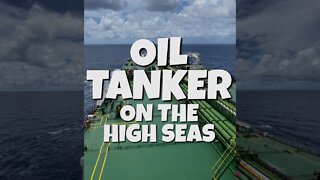Introduction to Buckling and Collapse of Subsea Pipelines
Pipelines constitute a vital means of transporting and distributing liquids and gases such as oil, gas, and water over long distance. Since the early 1970s of the last century, pipelines have become one of the main means of transporting offshore oil and gas in many parts of the world. In-service hydrocarbons must be transported at high pressure/high temperature (HP/HT) to ease the flow and prevent solidification of the wax fraction. The difference between the high-pressure/high-temperature (HP/HT) and the as-laid conditions would cause pipelines to expand. The axial expansion, however, is restrained either by soil friction, rocks, or anchors, thus inducing significant compressive axial loads in the pipeline wall. When the axial force reaches the lowest global buckling capacity, the pipeline will buckle globally, and the effective axial force will drop. If the pressure or temperature is further increased, the post-buckling will happen.
What is pipeline buckling?
Global buckling of a pipeline means the loss of stability of the pipeline similar as a bar in compression. The global buckling may appear either horizontally (lateral buckling on the seabed) or vertically (upheaval buckling of buried pipelines) (DNVGL-RP-F110 2017).
For full videos you can visit this link :
https://drive.google.com/file/d/1FB542Svm1K0k_0FFETysC06zvNKvVNpJ/view?usp=sharing
and you will be directed to a google drive link where you can download all files of this course
https://drive.google.com/file/d/12Fh1GelQtY0-8h0y0i3Uh2wsZZvCj05v/view?usp=drive_link
-
 30:04
30:04
Subsea Engineering Course
2 months agoSubsea Pipeline On Bottom Stability Analysis
11 -
 20:00
20:00
Subsea Engineering Course
1 month agoIntroduction to Subsea Flow Assurance in Subsea Pipelines
2 -
 6:02
6:02
Lesics
4 months agoKaplan Turbines | Understanding the Giants of Hydroelectricity
3 -
 0:39
0:39
Hopefulgeek
2 years agoOIL TANKER AT SEA UNDER WINDY CONDITIONS
12 -
 0:24
0:24
WSYM
7 years agoPipeline beneath Straits of Mackinac passes pressure tests
50 -
 1:34
1:34
Government news
1 year agoNord Stream Pipelines 1 And 2, Shows Gas Leaks.
227 -
 3:35
3:35
WPTV
3 years agoDepartment of Transportation warns of 'heightened risk for imminent failures' on pipeline that ruptured in September
17 -
 0:10
0:10
Goldfields Mini Digger
2 years ago $0.01 earnedWater pipe trenching
102 -
 0:24
0:24
WSYM
7 years agoPipeline beneath Straits of Mackinac passes pressure tests
2 -
 18:21
18:21
Project Sentinel
3 years agoSolving #Cybersecurity Vulnerabilities Exposed by the Colonial Pipeline Hack
66